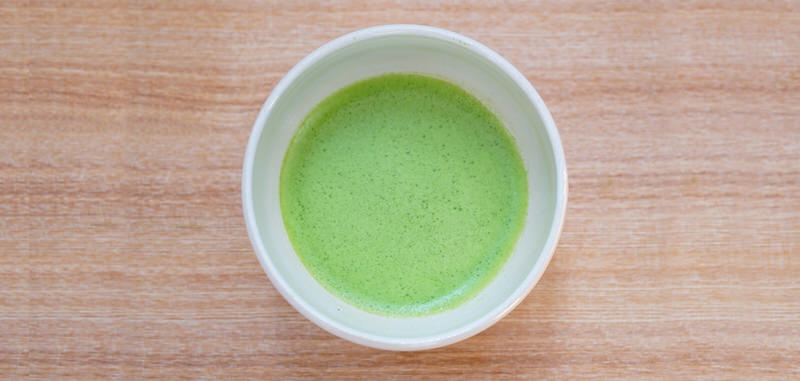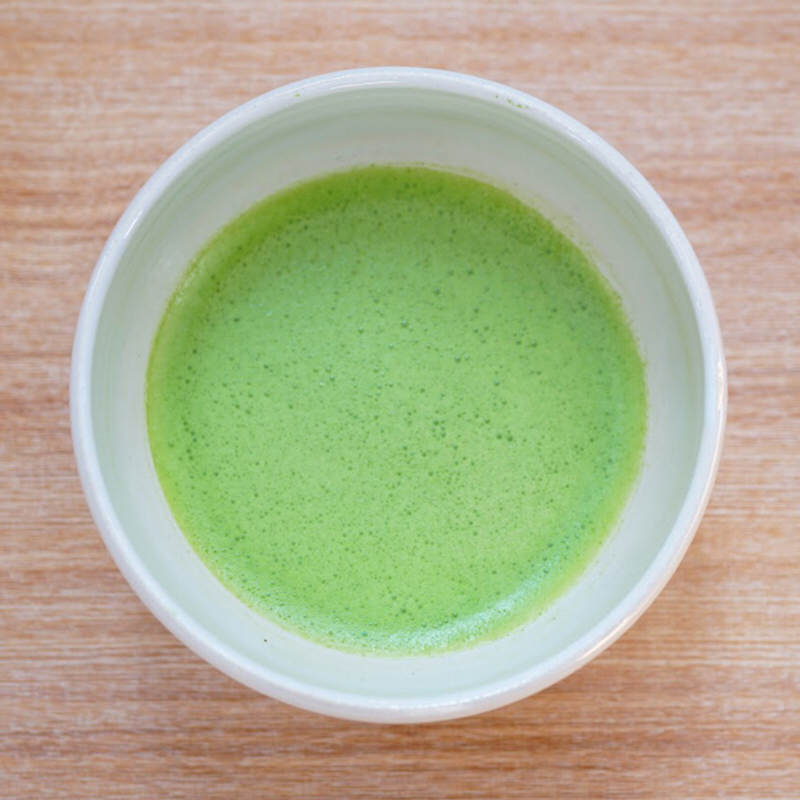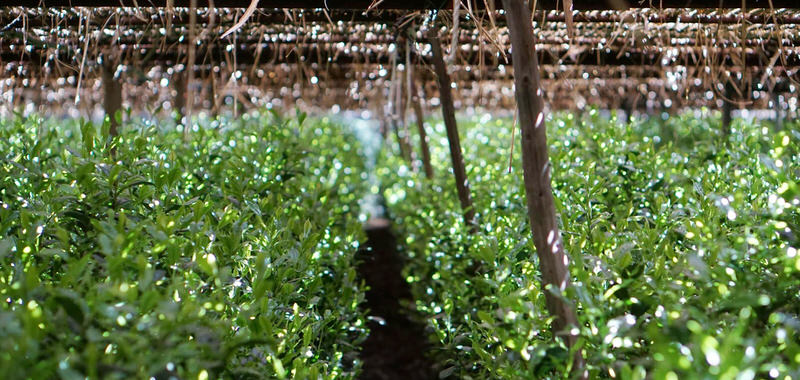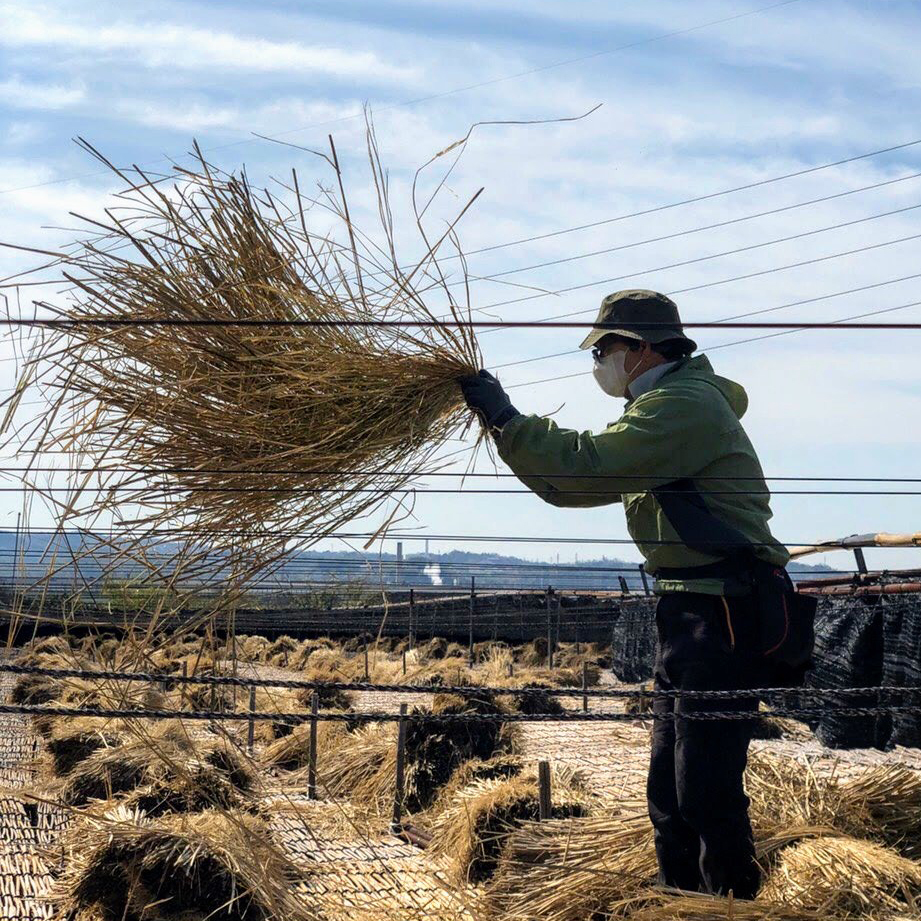It is known that theanine and the amino acid glutamate, which are the main Umami ingredients of teas, are produced in the roots and then retained in the new shoots. When the new shoots are exposed to sunlight these ingredients are transformed to catechins which are the cause of the bitter flavour associated with tea.


The process of covering tea plants was first introduced to protect new buds from frost damage. However, when tea producers recognised the improved flavour and fragrance, they also adopted this method for tea production.
Honzu Cultivation' is a traditional method of cutting out sunlight but it is a time consuming process as we need to build a base and lay reed and rice straw. Consequently,'Ooishita Cultivation' using 'Kanreisha'(sunshade cloth) is more commonly used these days. Although the effects of both methods are similar, a unique ambience and atmosphere can be experienced when walking under the shade of a 'Honzu Cultivation' farm. This is because light rays are scattered unevenly by the rice straw and find their way through small gaps, while 'Kanreisha' fibers block the falling sunlight in a single direction.
Scientific analysis has demonstrated that the straw used for ‘Honzu’ in particular, blocks the ultraviolet rays effectively, while 'Kanreisha' uniformly blocks the ultraviolet rays and infrared rays contained in the light that enters.

We cover our tea plants and allow them to accumulate Umami ingredients in their leaves for approximately one month. The amount of sunlight that reaches the leaves differs depending on the way in which we lay the rice straw. Judging how much straw to lay to have perfect sunlight control is based on experience and a deep knowledge of plants.

Reference: [Chusei no kissa bunka, Girei no cha kara 'chanoyu' he] by Yoko Hashimoto/Yoshikawa Kobunkan 2018


























